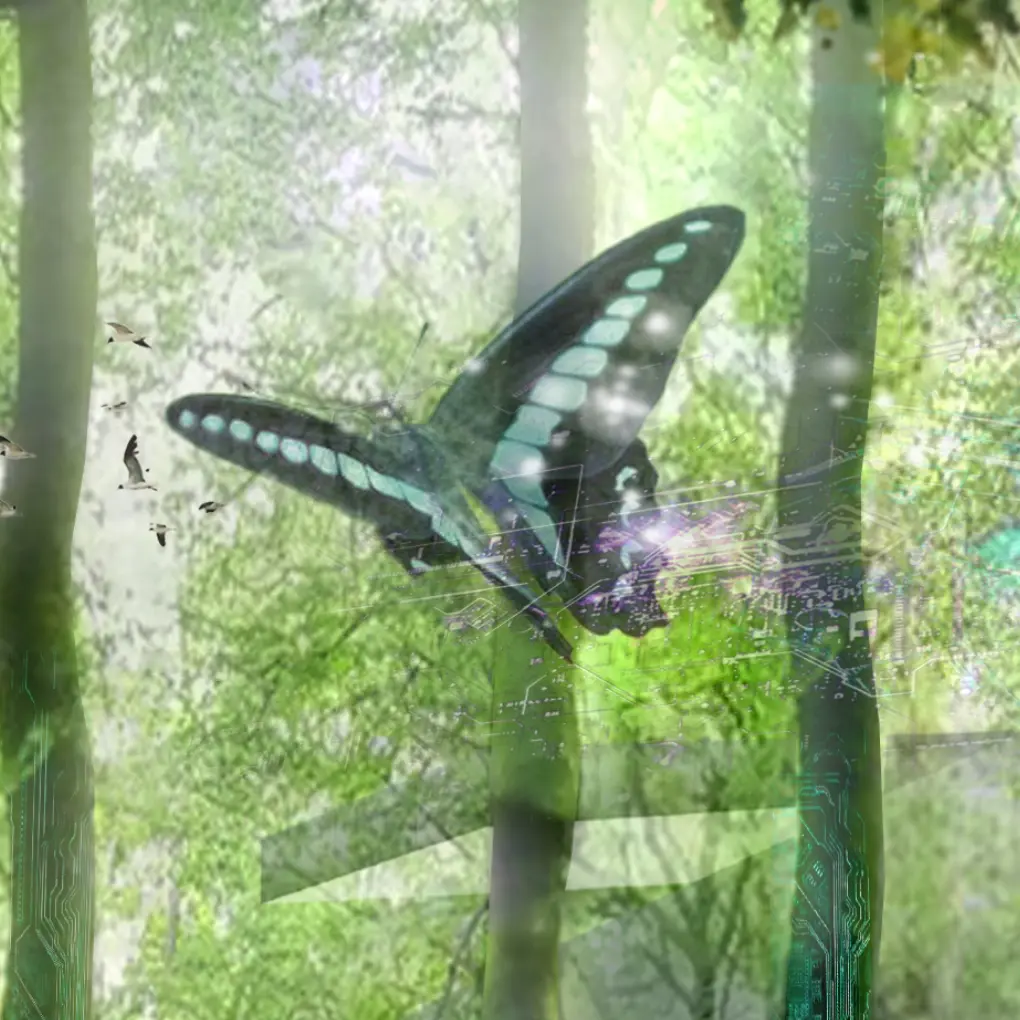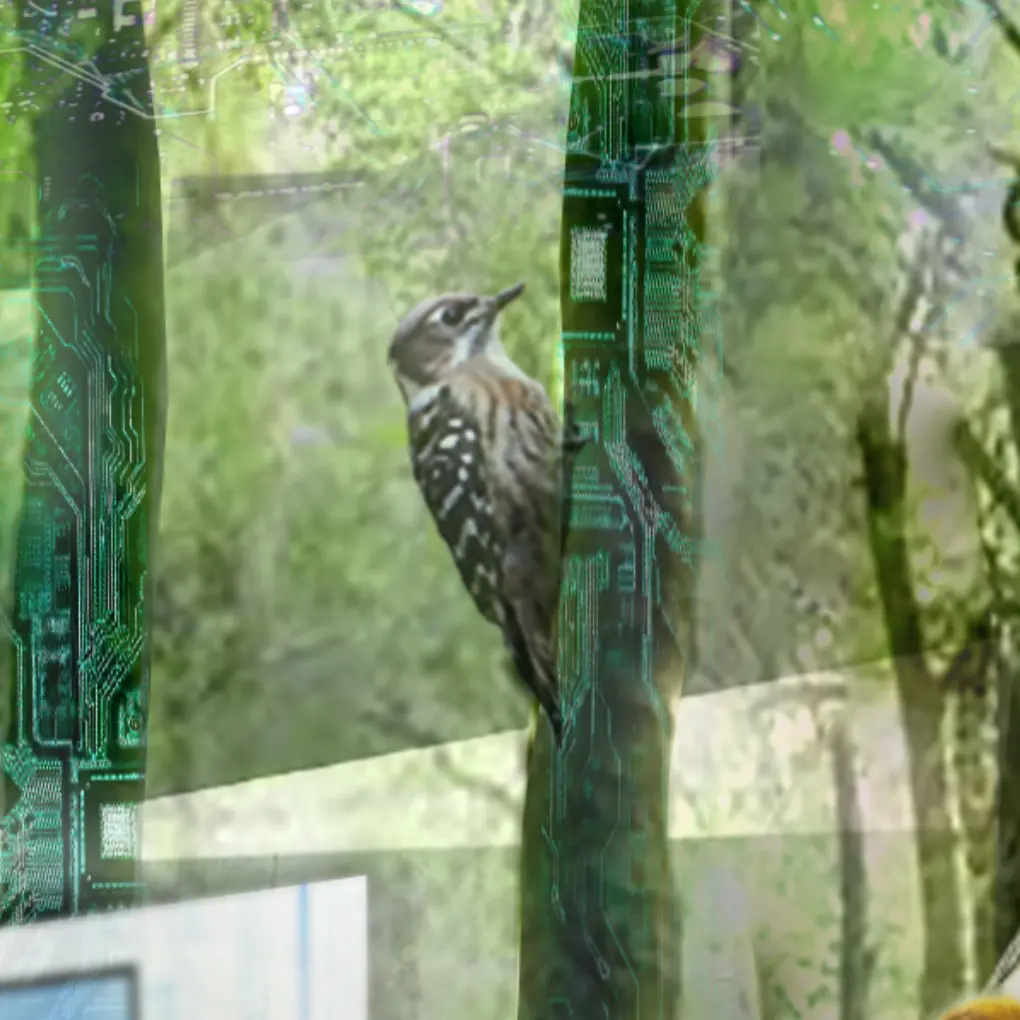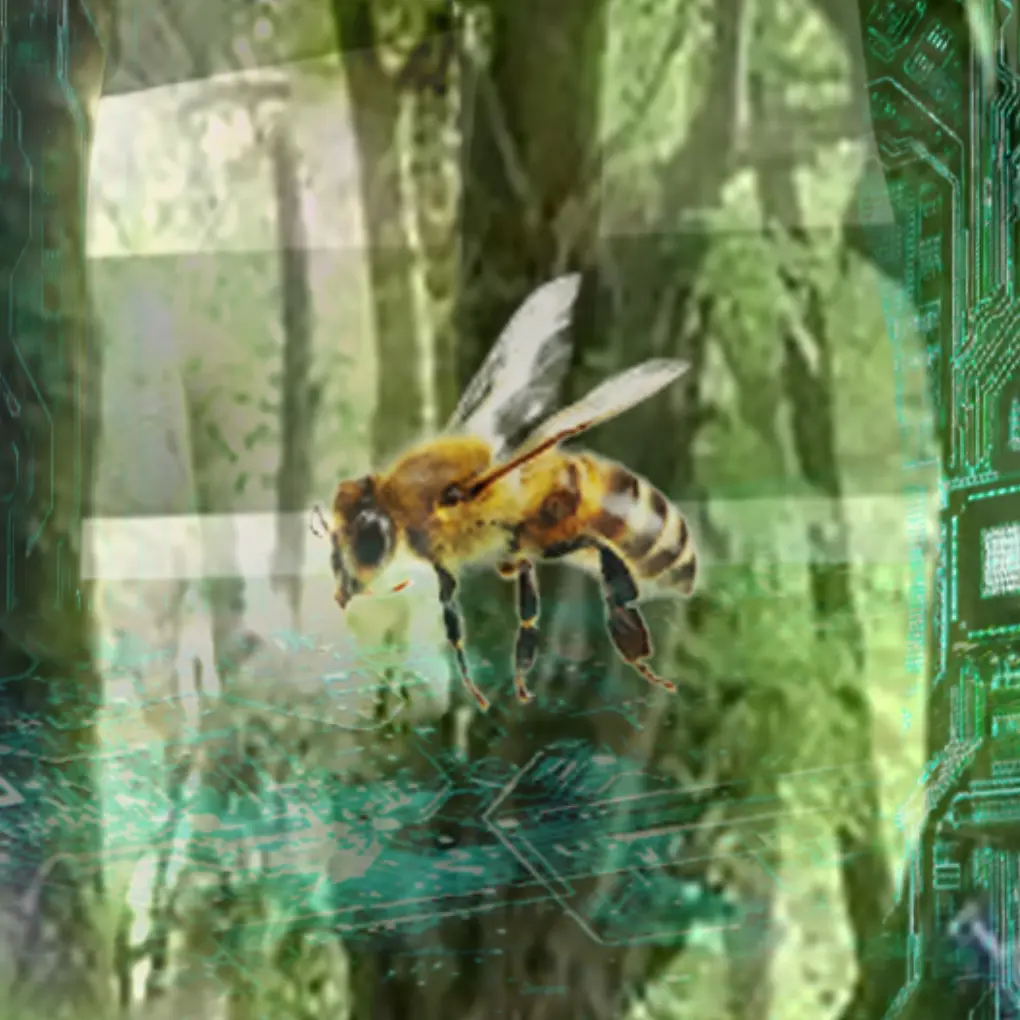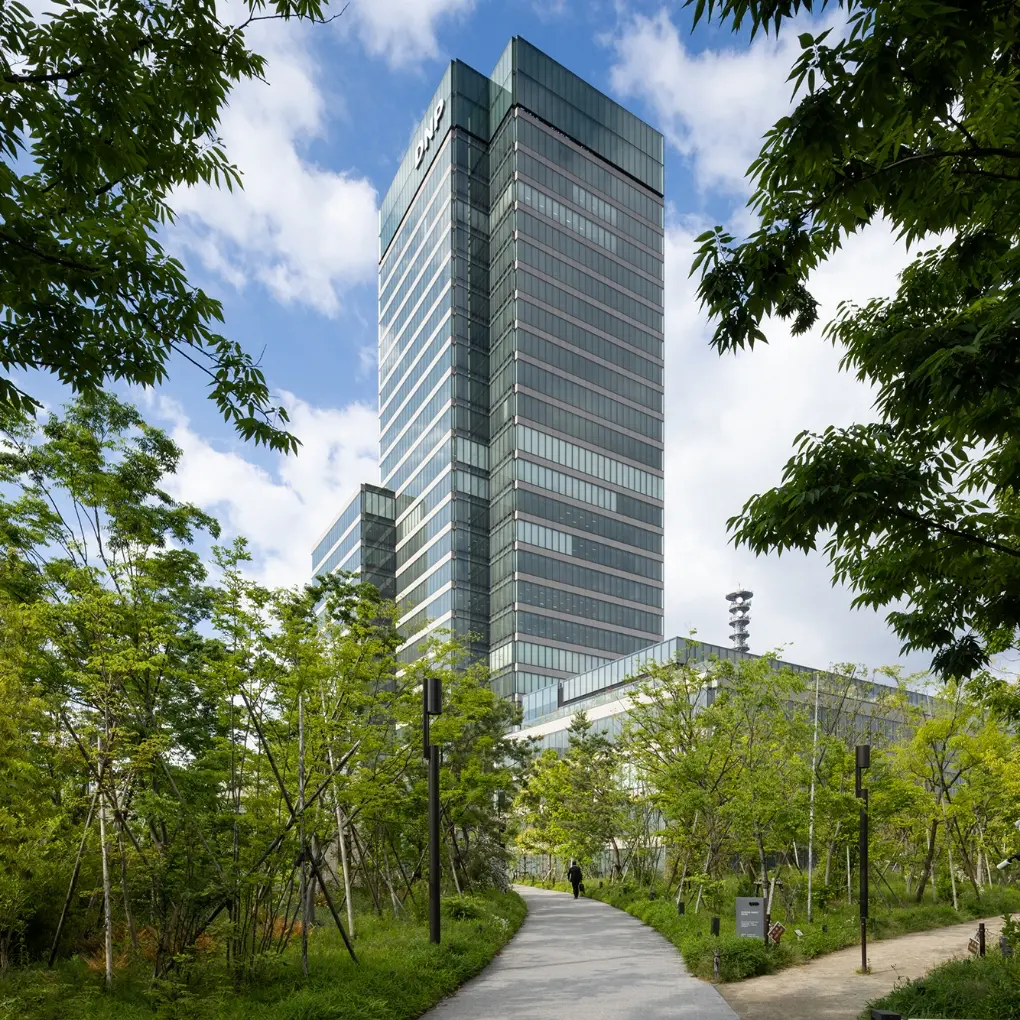Creatures Living in the Kizuki-no-mori
Some of the creatures that live in the city have wandered into Kizuki-no-mori. Why not think about how we coexist with nature by experiencing their ecology?
Bluebottle butterfly

Butterflies, which react sensitively to environmental changes, are said to be one indicator of a region’s biodiversity. One species commonly seen even in urban forests is the common bluebottle, known for its striking black wings adorned with beautiful blue-green patterns. This is because its larvae love to feed on camphor and machilus trees, which are abundant in parks and along city streets, while the adults can easily obtain the nectar they eat from urban flowers.
Japanese Pygmy Woodpecker

The Japanese Pygmy Woodpecker is a type of woodpecker that pecks holes in tree trunks to find the insects that it eats. By eating pests, it protects trees, and the holes it pecks open are used as nests by other animals, and thereby contributes to biodiversity. As its main food source is insects hiding in trees, it is resilient even in winter when there are fewer insects, allowing them to inhabit the same area all year round. It has also become common to find them in urban areas where there are many dead branches suitable for building nests.
Honeybees

Honeybees, which fly from flower to flower and help with pollination, can be said to be a symbol of rich biodiversity. In areas where honeybees live, plants reproduce actively, and the insects that live there also have food and shelter. Recently, beekeeping has become more common in urban areas, where there are many large parks and little pesticide spraying.
Creating new forests to nurture urban wildlife

We want to create a new forest in an urban area as a place where we can coexist with nature. Such an undertaking is underway in Shinjuku Ward, Tokyo.
This is "Ichigaya no mori (Ichigaya Forest)," which surrounds the DNP building. While preserving the diversity of vegetation, native species have been planted first, providing a habitat for a variety of living creatures, including birds and insects. About 10 years have passed since the start of the project, and changes have been seen, such as the natural growth of elm and butterbur sprouts, which were not planted at the beginning, and the area has been highly praised as a good example of a sustainable urban environment.
